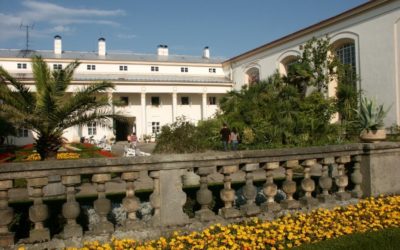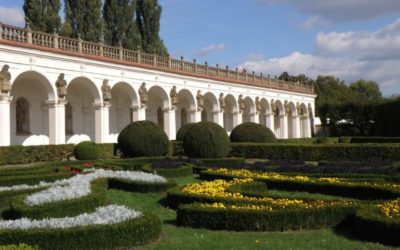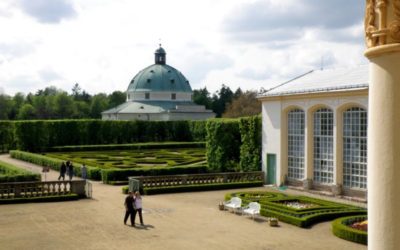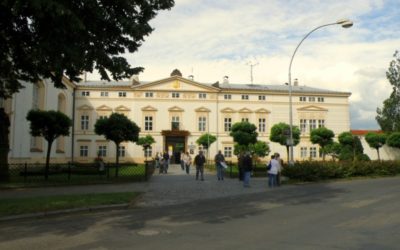The flower garden was founded by Prince Charles II. from Lichtenstein behind the walls of the then town on barren and swampy land in the years 1665 – 1675. Libosad is an example of an early Baroque garden in our country and at the same time precedes later types of French gardens. It is a unique authentic form of the early Baroque libosad, examples of which have either not been preserved on the continent and in England, or only parts remain.
The flower garden forms a regular rectangle with shorter sides in the west and east. The western wall consists of a 244 m long gallery – a colonnade with 46 open arcade fields with 46 niches (round niches) with antiques inspired by statues. Summer Palace – a rotunda with a dome and 46 busts of fauna and water games forms the center of the west side of the Flower Garden. The interior is decorated with stucco by Italian artists. An interesting exhibit of this object is Foucault’s pendulum, with which Jean Bernard Leon Foucault proved the rotation of the globe in Paris in 1851. The pendulum was installed here at the beginning of the 20th century by prof. František Nábělek, Kroměříž physicist and astronomer. Together with the gallery, it is one of the world’s most valuable central buildings in the history of gardens.
The eastern part of the garden consists of a baroque aviary on an island in a profiled pool, a rabbit hill, which has not been preserved. Then there are two piled up garden hills – the so-called strawberry hills, from which it is possible to overlook the whole garden, and two labyrinths, round and square. Everything is lined with high trimmed fences with a length of 5.5 km and low trimmed fences and fences. The original entrance to the gallery was replaced by the so-called Gardener’s House and two greenhouses in the Empire style. At present, cultural and social events are held in greenhouses and in the rotunda.




